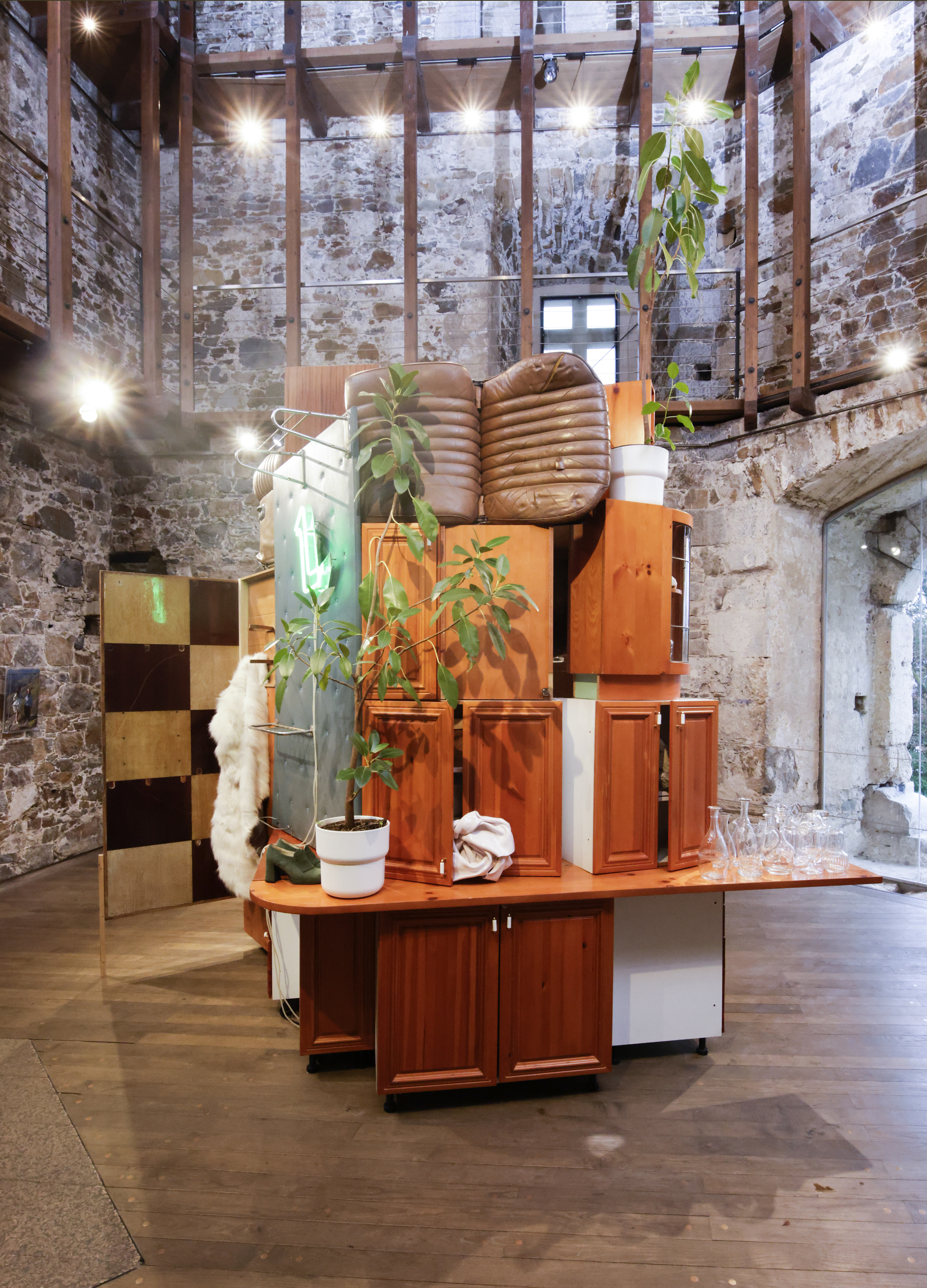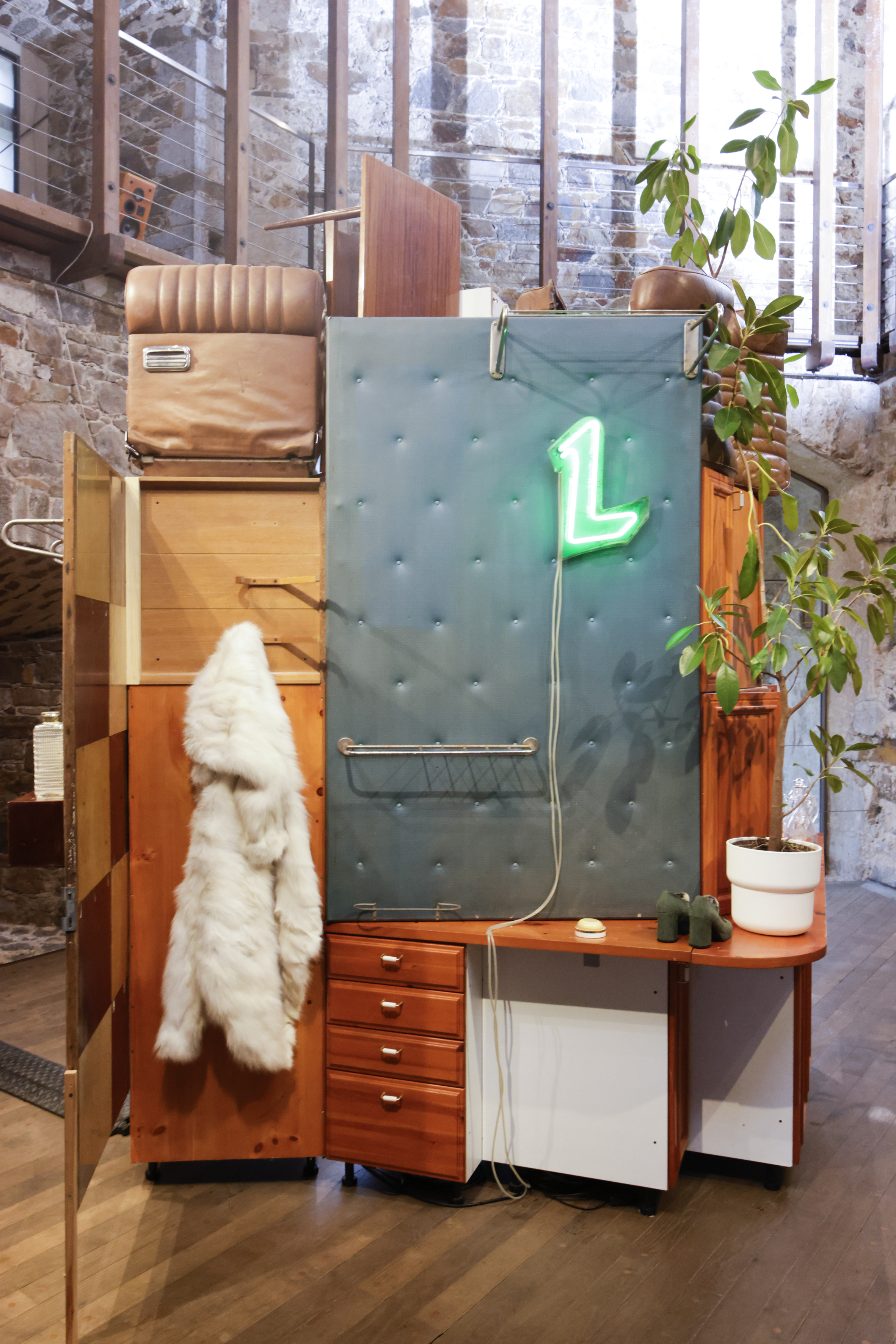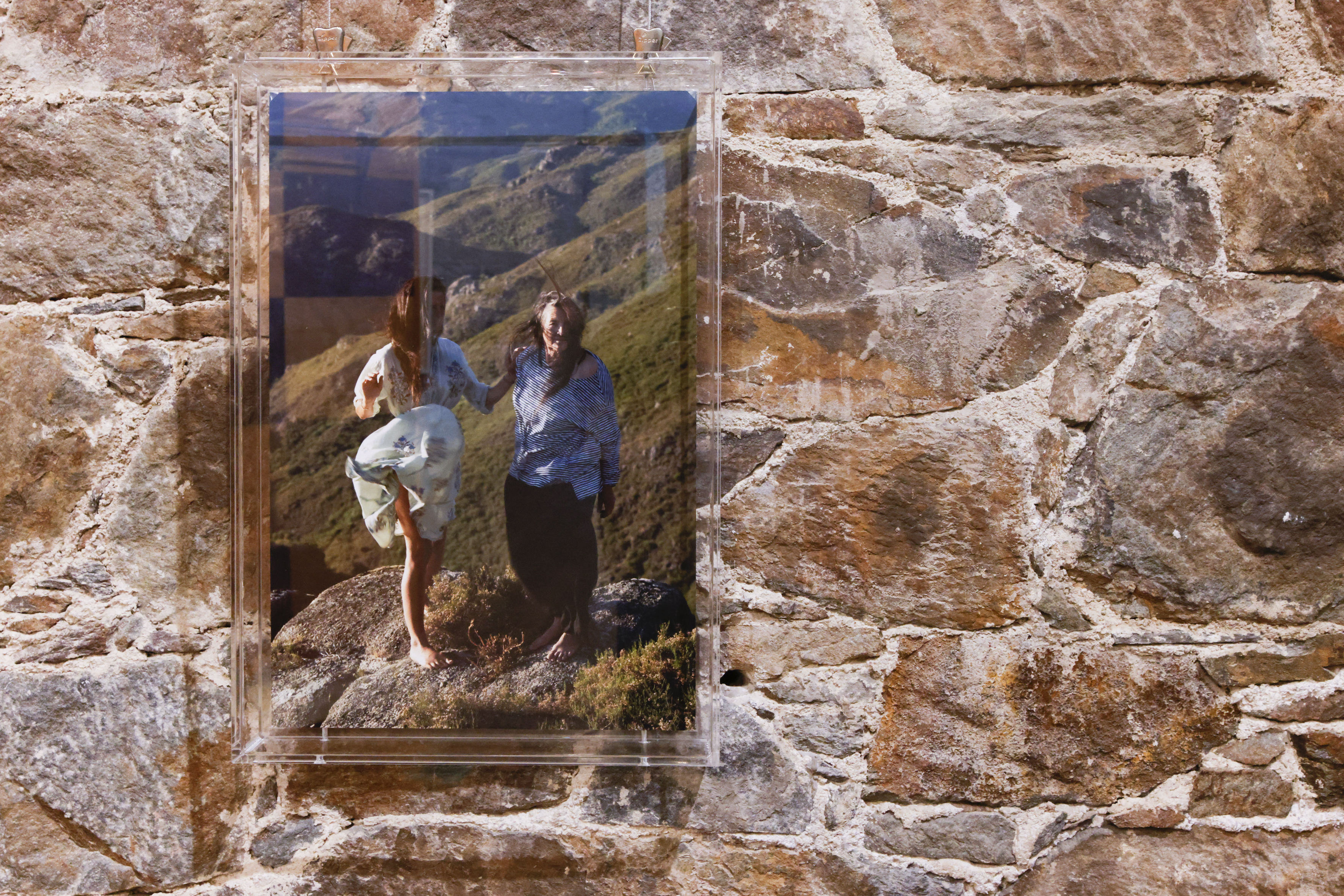Courage Mon Amour
September 25 — November 16, 2025
Ljubljana Castle, Ljubljana
TEXT & CURATOR
Laura Amann Marín
SOUND & PHOTO
Śresta Das Ananda
Diana Tamane
[the father and the mother]
This is another love letter. Following the one created for her father in 2022, it forms the next chapter in Maja Babič Košir’s long-term project Courage Mon Amour—an evolving body of work grounded in personal memory and emotional heritage. It began with her father’s death, and with the artist’s impulse to open a posthumous dialogue through his archives—an intimate act of mending what had remained unsaid in life. This new chapter turns to the artist’s mother: still living, present, and emotionally complex. A relationship marked by the full spectrum of love and conflict, proximity and silence. It is, too, a testament to the subtle legacies passed across generations.
[how memory works]
But how does memory actually work? It’s often said that memory plays back experience to help us recall what we saw, heard—or who we once were. So why can’t we simply push a button and play the tape, like an old VCR? Because memory isn’t playback. It’s reconstruction. We’re given a few puzzle pieces, but there are gaps—and memory abhors a gap. So in come inferences, substitutions, information from others—fragments stitched in to complete the picture. The result? A memory that feels whole, yet is anything but. The past is rebuilt, not retrieved.
[freudian oedipal triangle]
And what of memory when it comes to those most formative figures—our parents? Or parental-figures. Or lack thereof. (Forgive the binary shorthand, and feel free to imagine all the queer kinship structures possible.) Being in Vienna, it’s hard to escape the gravitational pull of Freud, particularly his famous oedipal triangle. Let’s do a quick refresher: the male-assigned child desires the mother, fears the father, fears castration, then identifies with the father and internalizes his values. The female-assigned child experiences “penis envy,” shifts affection from mother to father, then identifies with the mother and forms a fragile (of course) feminine superego. Confused? You’re not alone. Freud’s framework for female subjectivity is as flimsy as it is phallocentric—infamously incoherent, pathologizing, and steeped in a logic of lack.
And yet, despite its essentialism and its cultural myopia, Freud’s model remains influential—even if only as something to rework, resist, and radically reimagine. From this friction has emerged a far more fluid, embodied, and plural understanding of how subjectivity, gender, and desire take shape.
[queer-feminist reimaginings]
Thankfully, feminist and queer theorists have not left us stuck in Freud’s oedipal loop. Thinkers like Luce Irigaray, Julia Kristeva, Nancy Chodorow, and Judith Butler have picked apart the patriarchal scaffolding of the nuclear family model—and with it, the rigid gender roles and developmental teleologies it enshrines. Irigaray exposed how the mother is rendered invisible in phallic economies, calling instead for genealogies of women. Kristeva mapped the maternal not as a lost object but as an ambivalent, semiotic space—full of rhythms, fluids, and contradictions. Chodorow examined how mothering is reproduced socially, not biologically, and how the emotional labor of women is central to psychic life. And Butler, of course, blew the whole structure wide open, questioning whether gender identity emerges from familial resolution at all—or whether it’s a citational, regulatory performance. What these thinkers share is not only a critique of Freud but a refusal to resolve familial ties into neat developmental narratives. They offer, instead, a more fractured, entangled, and tender understanding of how desire, identification, and care are formed—one that echoes throughout Courage Mon Amour.
[politics of emotion]
It’s at this intersection—where memory, inheritance, and resistance collide—that I would position Courage Mon Amour. Deeply personal, yes—but also structural. Maja Babič Košir’s work reshapes itself like an iridescent, ever-turning Rubik’s cube: autobiographical and intimate, yet reflective of broader psychic and social dynamics. Because even if trauma and emotion are among our most personal experiences, they are never only ours. They are shaped by family, society, ideology—and at times, wielded like weapons. As Sara Ahmed puts it, “emotions work to shape the ‘surfaces’ of individual and collective bodies,” simultaneously “bodies take the shape of the very contact they have with objects and others.” (The Cultural Politics of Emotion, 2004)
[trauma]
A decade after Ahmed’s book, another landmark text reframed how we understand trauma’s inscription on the body. In The Body Keeps the Score (2014), Bessel van der Kolk merges neuroscience, psychology, and somatic therapy to argue that trauma is not just remembered—it is embodied. Meaning the body remembers when the mind forgets. The musculature, the nervous system, the skin—these become archives of pain and survival. Healing, then, cannot be purely cognitive; it must also be sensorimotor, relational, and physical. And that’s how breathwork, sound, touch, and ritual become tools of repair alongside words.
[furniture as an extension of the body]
In Courage Mon Amour, it is the furniture that keeps the score. At the center of the installation is Tribute—a sculptural composition built from an original kitchen furniture, salvaged from a family house that no longer exists, and that perhaps never truly functioned as a “home.” The kitchen—with its surfaces, smells, and textures—becomes a tactile relic of a fragmented domestic past. Here, the sculpture rises vertically, echoing the Pentagonal Tower of Ljubljana Castle—a space charged with history, defense, and myth. The tower, with its irregular geometry and vertical thrust, evokes the myth of Babel: a structure built in longing, undone by disconnection. The installation resonates with it, inhabiting its symbolic space gently—seeking connection without resolution. A space that has lived many lives and embodies a transition point in defensive architecture, where form follows both military rationality and symbolic assertion. Its geometry and material logic speak of warcraft and watchfulness, a presence that is a testament to the afterlives of power - perhaps a bit like the memory of a parent? Or is that a little too far-fetched?
[more puzzle pieces]
Into Tribute, the artist incorporates her mother’s plants, tenderly kept and cared for—Ersatz-children, perhaps? Alongside them: a white fur coat, a pair of unworn green Benetton heels, a stack of postcards once sent to her husband, pieces of crystal glassware and other personal belongings and small trinkets gathered during shared excursions to flea markets and antique shops. Fragments. Puzzle pieces. Objects kept for reasons forgotten or unknowable. (“Does it spark joy?”) They carry affective charge, becoming extensions of the body, vessels of memory. In a photograph mounted in plexiglass, the artist’s hand reaches forward into a shared landscape—her mother absent, her desire for contact unanswered?
Finally the installation is also shaped by sound: one piece creating subtle tension—a murmur, a pulse, an unresolved chord and a second one featuring a recording by her daughter Morgane singing—a gift once too vulnerable to share, now a trace of lineage and transformation.
Courage Mon Amour is not a finished story. It is an act of holding, assembling, listening—for what persists despite fragmentation. It is, in the artist’s words, “an emotional monument… a love letter,” one that touches the deeply personal without falling into the trap of sentimentality. Here, the maternal is not idealized, but held in all its contradiction: presence and absence, silence and care. If the father was addressed posthumously, the mother is now part of the work itself. The story changes alongside the artist, deep love always remains, albeit in a fragile balance.




